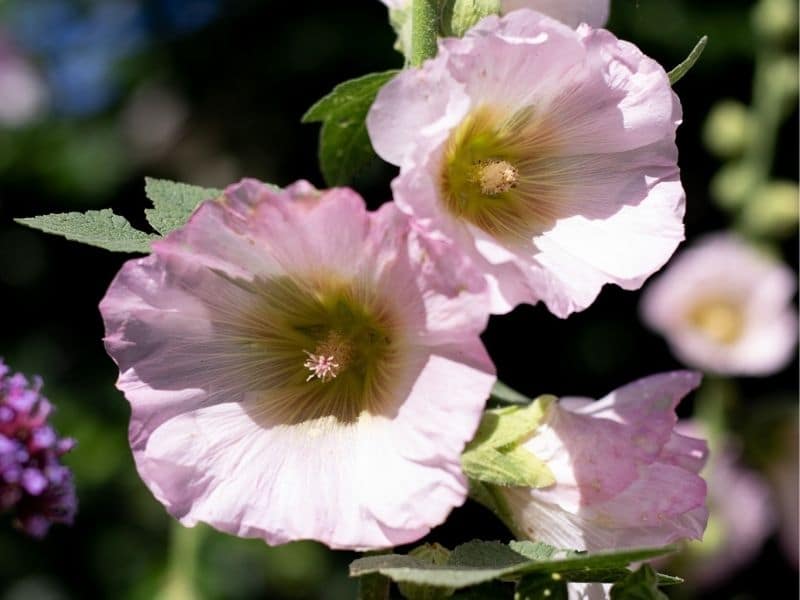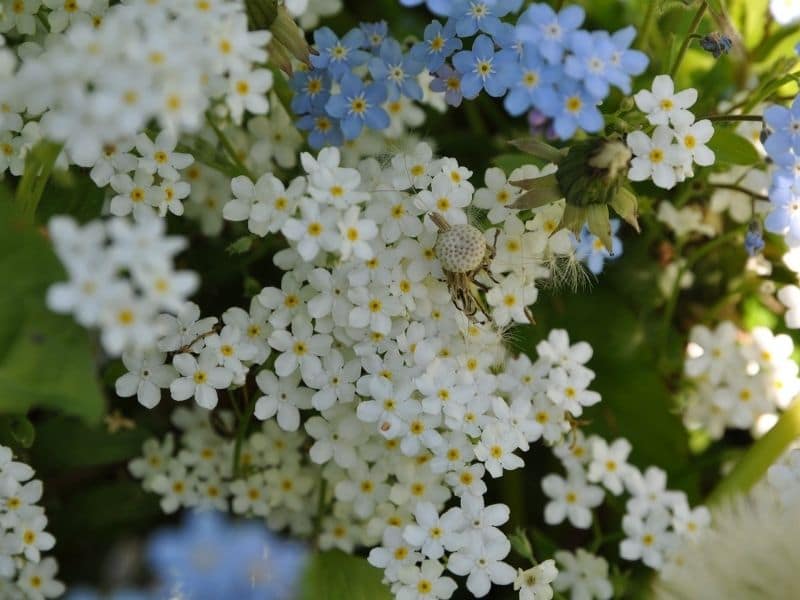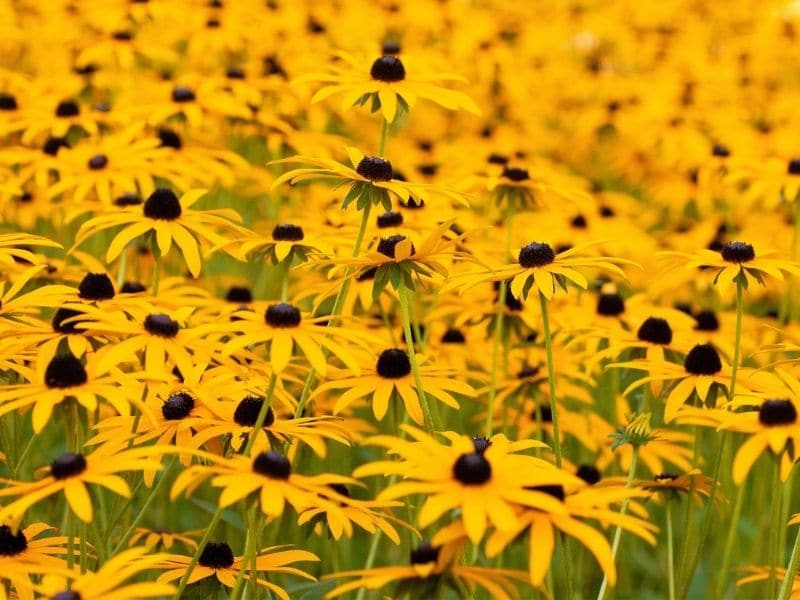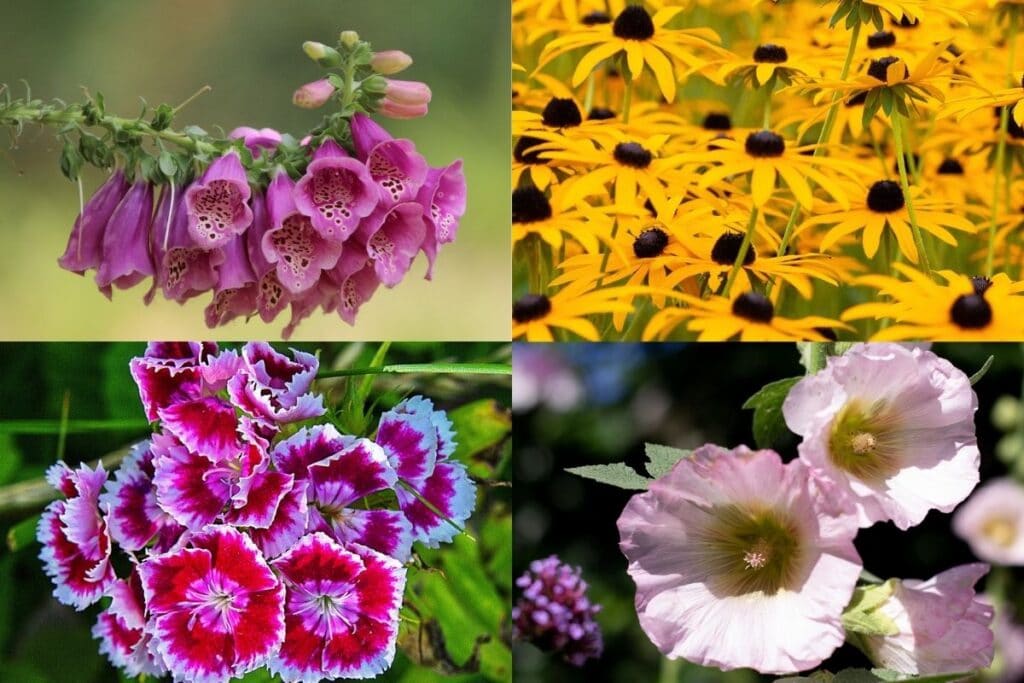If you are a vivid gardener and you love planting different flowers, you probably have come across biennial plants. In this guide, we will give you a common biennial flowers list and how to care for them.
What Is A Biennial Plant?
Biennial flowering plants are not for the impatient, as they will not flower during their first year of life. They will also only flower one time, like an annual flower, but spend their first year establishing their root system, stems, and leaves so that they can focus on blooming the second season.
Many biennials require a cold treatment, known as vernalization, before they will blossom.
If you are patient enough to wait until your plant’s second year to see flowers, the rewards can be great. Some flowers are just worth waiting for, here are some of the best examples of biennial plants:
Hollyhocks

Hollyhocks are a popular biennial that are often grown not only for their beautiful flowers, but also for their massive height. The hollyhock plant can grow up to 9 feet tall, more than likely making it one of the tallest plants in your garden. Hollyhocks come in a variety of colors such as blue, pink, purple, yellow, red, and white.
Hollyhocks will require some extra work, but the outcome is worth it. One of the most common mistakes in growing hollyhocks is planting them in soil that is too dry. Their soil needs to be kept moist, but not saturated. Soil that is rich in nutrients is also of high importance for these plants.
Hollyhocks should be planted approximately a week before the last frost if started from a seed. This will have the flower seedlings sprouting a few weeks after the last frost, which is ideal timing for these plants.
Forget-me-nots

Although forget-me-nots are a biennial flowering plant, their seeds spread easily and will oftentimes replant themselves without human intervention. Forget-me-nots bloom small flowers and generally come in blue, pink, and white.
Forget-me-not flowers are very hardy and have been known to grow almost anywhere. Ideally, plant them in indirect sunlight with moist soil and these conditions will help them to thrive.
The best time to plant forget-me-nots is in the early spring. You should get blooms the following season if planted in time.
Black-eyed Susans

Black-eyed Susans are usually considered a wildflower, and are a popular choice for wildflower gardens. These flowers are yellow in color and have a dark brown center that really pops against the bright yellow. The dark center kind of resembles a black eye, hence the name black-eyed Susan.
Black-eyed Susans grow best in full sun, but they have been known to thrive in partial sun areas as well. They aren’t very particular when it comes to soil; they are a wildflower after all.
These flowers often attract bees, butterflies, and other insects, making them a fun addition to a butterfly garden.
The black-eyed Susan should be planted between the months of March and May, once soil temperature has reached 70 degrees Fahrenheit. The blooms will start between June and October.
Foxglove

Foxgloves are another tall flowering plant that can reach heights of up to 6 feet. Although not as tall as hollyhocks, they are still likely to reach heights well above the rest of your garden. Foxglove blooms can be found in pinks, reds, purples, yellows, and whites.
The name is based on the shape of the flowers, which are thin and cone-shaped. This shape is similar to a glove, and it’s just about the right size for a fox’s paw.
Foxglove plant will thrive in nutrient-rich soil that is well-drained. They will do just fine in either full sun or partial shade, so you have some leeway when it comes to planting locations.
Early August is generally the best time to plant foxglove seeds. If planting as a small start, wait until the cooler months of fall to begin.
Sweet William

As a part of the carnation family, Sweet William flowers come primarily in whites, pinks, and reds and they grow in clusters. Some varieties bloom bicolor combinations, with white and pink being one of the more popular.
The sweet William does best in full sun exposure and in well-drained soil. They can dry out in extreme heat, so having a plan to provide shade during exceptionally hot days is a good idea.
Sweet William grows well in gardens, flower beds, and containers, making them a versatile option for the flower gardener. For those who live in unpredictable climates, a container may be ideal so that they can be moved inside as needed.
How to Care for Biennial Flowers
Most biennial flowers will do best when planted in late spring or early summer; this is the ideal time for these plants to start their growth. To encourage germination in the cooler months, many start their biennial seedlings in a greenhouse or indoors, then transplant the starts in their garden or garden beds once developed.
In some regions where frost is particularly harsh, a cover may be needed to keep your biennials alive in the colder months.
As with most young plants, watering is of crucial importance. This is particularly true while the roots are establishing. Although you should not expect blooms the first growing season, treat your biennials as though you are expecting blooms. This means plenty of water, proper sun exposure, and fertilizers if needed.
What is the Difference Between and Biennial, Annual, and Perennial?
When it comes to plants, there are three main life-cycle varieties. As mentioned previously, biennials have a two-year life cycle. Biennials spend their first season growing and establishing themselves, and will then use their energy to bloom in their second growing seasons. A true biennial will die after they bloom, but many biennials will spread seeds to start the next generation.
Annuals are similar to biennials in the way that they die after blooming. The main difference is that annual cultivars complete their entire life cycle in just one year. Some plants that are perennials in warmer climates will be annuals in climates where it gets cold because the plant is not accustomed to surviving the cool temperature.
So what is a perennial? Perennials generally bloom every year and will come back the following growing season to bloom again. Many people choose to grow perennial plants in their gardens because they will not have to spend time planting new flowers again year after year. Only the dormant seed of a perennial plant can survive the winter and germinate in the spring.
FAQs
Is Marigold a biennial?
No, Marigold (Tagetes) is typically an annual plant, not a biennial. It completes its life cycle, including germination, flowering, seed production, and death, within a single growing season.
How many times flowering takes place in biennial plants?
Biennial plants generally flower once during their second year of growth before completing their life cycle. In the first year, biennials typically focus on vegetative growth, producing leaves and storing energy in their roots or bulbs. The transition to the flowering and seed-setting phase occurs in the second year.
What vegetables are biennial?
Biennial vegetables include some root crops such as carrots, beets, and onions.
What is the difference between biannual and biennial crops?
The difference between biannual and biennial crops lies in their growth cycle. Biennial crops have a two-year life cycle, completing their growth, reproduction, and seed production in two years. “Biannual” is not a commonly used term in agriculture.
See more: Annual vs Perennial







